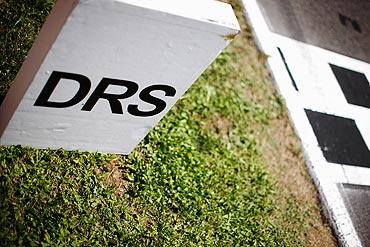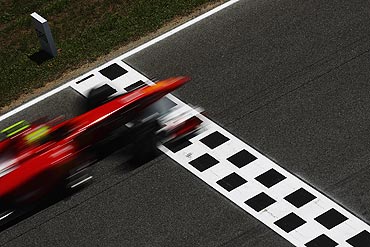 | « Back to article | Print this article |
What two DRS zones mean for the Indian Grand Prix
The regulatory body behind Formula One, FIA, has confirmed that there will be two DRS zones in the inaugural Indian Grand Prix. Raja Sen explains the working behind the system.
The buzz was on for a while, but now the regulatory body behind Formula One, the FIA, has confirmed that there will indeed be two DRS zones in the inaugural Indian Grand Prix. This is the first year the contentious DRS option has been enabled, and most tracks worldwide have had only one DRS zone, the three exceptions so far being the Canadian GP in Montreal, the European GP in Valencia and, unsurprisingly, the Italian GP at Monza.
DRS stands for Drag Reduction System, which is a frequently argued against measure brought in by the FIA to artificially aid overtaking opportunities to increase on-track action. When a car is less than one second behind an opponent's vehicle, the car's driver can, in a designated section of the track, press a button to open an adjustable flap on the rear-wing of his car. This reduces the car's downforce instantly, giving the pursuing driver a speed advantage of about 10-12 kmph. This doesn't mean that he overtakes automatically, but just that he gets a good run in order to draw alongside the car in front and then attempt an overtaking maneuver.
At the Buddh International Circuit in India [which I have reviewed at length here], the two zones are as follows:
Zone One:
At the end of the lap, across the start-finish straight: With a detection zone checking the gap between the cars right after Turn 15, the lap's penultimate turn, this DRS zone will mean a speed-burst for the drivers to encourage passing their rivals at the right-handed Turn One, a wide but tricky third-gear turn.
The circuit is often wider in the turns to encourage wheel-to-wheel dog-fighting
Zone Two:
Across the really long back straight, more than a kilometer long: As the cars rise out of Turn 2 and ascend into Turn 3, the detection zone checks the interval between them and, a little more than halfway down the straight, the DRS can be enabled. The cars can duel it down the straight before braking for the challengingly abrupt Turn Four, and the DRS should make for some spectacular -- and some cheeky -- passes here.
Clearly there is a lot of pressure on both the FIA and the Jaypee Group, promoters behind the Indian Grand Prix, to provide a race with much, much overtaking. The circuit itself is often wider in the turns to encourage wheel-to-wheel dog-fighting, and these two DRS-enabled stretches are going to be like a scarlet flag ahead of a rampaging (red?) bull.
The 2nd zone looks like it's meant to allow the drivers to hit top speed at the end of the straight, but may lead to some amazing spins as cars lose control under heavy braking. There will be some very neat overtaking, sure, showing off racecraft and clever use of DRS, but as this track seems set to provide, there may well be more spills than well-executed thrills.

